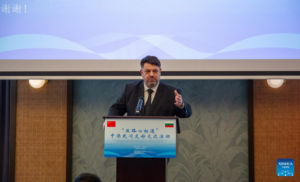China constructs a gargantuan fuel reservoir for an enormous future launch
The innovation represents a step forward in the construction of the Long March 9 missile.
China has created a fuel cylinder that is 33 feet broad (10 meters) in an effort to create an extremely heavy-lift launch vehicle.
On March 2, the China Academy of Launch Vehicle Technology (CALT) revealed that it had produced the enormous tank, showing that it had made the advancements necessary to create a fuel storage tank that was both sturdy and thin and light enough to be used in rocket launches.
The 31.1-foot-diameter (9.5-meter) tank was constructed in accordance with specs for a vintage, disposable variant of China’s Long March 9 rocket. However, the display of methods like stir friction welding and materials will be applied to the new design, which China has since announced it is moving to and has a circumference of 34.7 feet (10.6 m).
The 16.4-foot-diameter (5 m) Long March 5 series of rockets is China’s current largest and most potent missile, capable of launching about 48,500 pounds (22,000 kilos) into low Earth orbit. (LEO). The Long March 9 will have a cargo capability to low-Earth orbit (LEO) of roughly 308,000 to 330,000 pounds when it makes its first flight in 2030. (140,000 to 150,000 kg).
The International Lunar Research Station (ILRS), China’s response to NASA’s Artemis mission, will be constructed using the launcher. Deep space projects and solar power facilities could also be launched using it.
CALT is a division of CASC, the primary state-owned space provider for China. Other CASC organizations have expertise in fields like constructing spaceships, building rockets, creating novel motors, and more.
A bigger variant of the launch vehicle being developed by CALT will be used to transport humans to the moon. It will also be used to propel personnel to the Tiangong space station. The initial flight is scheduled for 2027.













